Sweden’s Racism Problem Isn’t Hidden—It’s Institutional
What 88 ignored reports reveal about the Discrimination Ombudsman, systemic bias, and the illusion of Swedish equality.
Colorblind Sweden and Why Black People Still Don’t Win in ‘Equal’ Institutions

Compared to other European nations, Sweden reports one of the highest per capita rates of racially motivated hate crimes, underscoring the depth of systemic issues within its institutions.
88 complaints of discrimination. Zero actions.
That’s how Sweden’s Discrimination Ombudsman (DO) responded when Black youth - like Fardowsa Hirsi’s son - were repeatedly denied entry to nightclubs for one reason: their skin color. Not aggression. Not dress code. Just being Black. The system isn’t broken. It’s functioning exactly as it was built—to ignore structural racism while pretending it’s impartial. And here’s the truth: When colorblind institutions get to define what racism looks like, Black people never win.
I’ve worked in this space for years. I’ve spoken to DJs, club owners, women, youth - all navigating the same reality. Sweden’s racism isn’t hidden. It’s just gaslit into invisibility. Let’s name it.

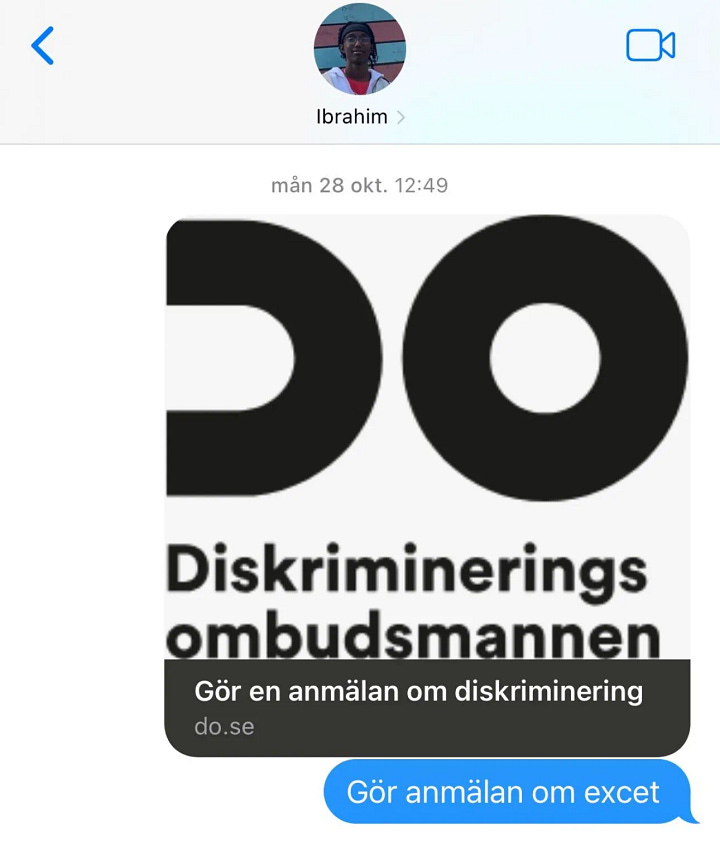
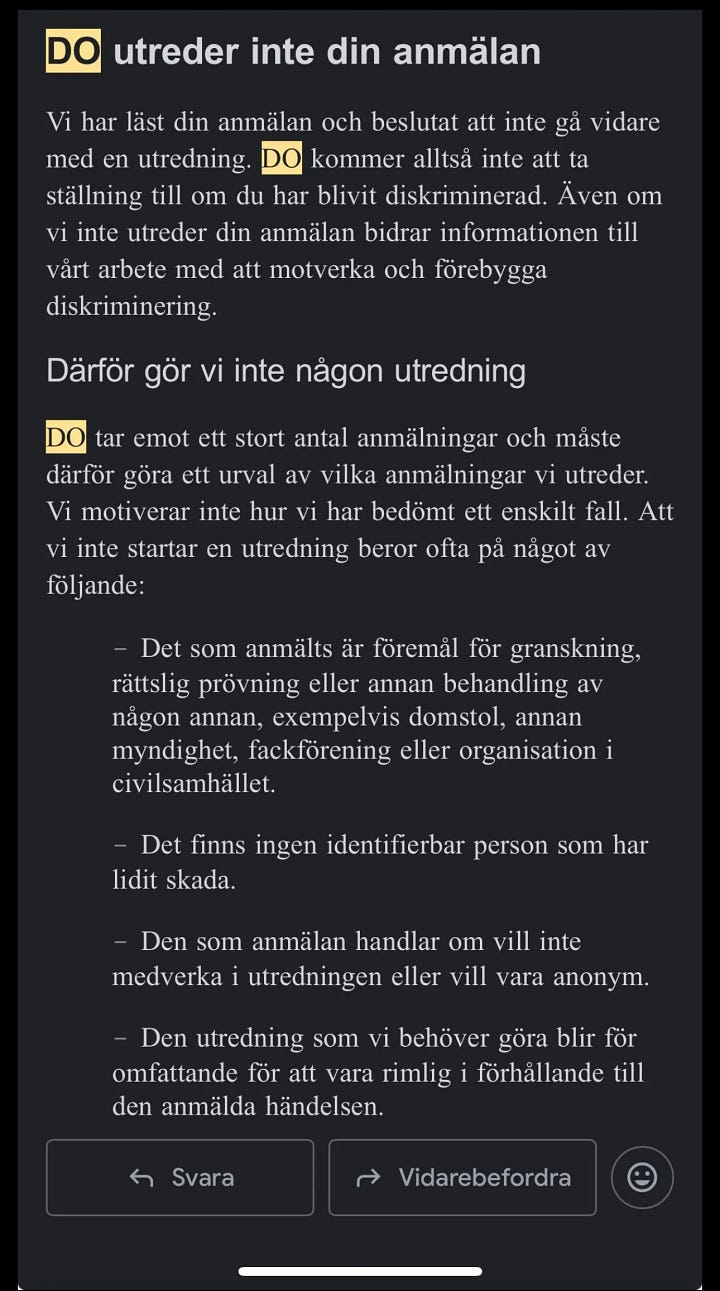

Anti-Black Racism in Swedish Nightlife: Normalized, Documented, Ignored
Let’s start with the truth: what “200 sekunder” exposed on Swedish television is not shocking to Black Swedes. It’s routine. It’s what we’ve whispered to each other outside club lines. It’s what many of us have experienced personally.
The episode revealed that Black individuals—especially young men—are regularly stopped by club bouncers while their white friends are waved through. No valid reason. No violation of dress code. No incident inside. Just being Black at the door. The cameras caught it. Sweden still denied it.
“I’ve seen this my entire adult life,” wrote Samuel Girma, cultural worker and long-time voice in Sweden’s anti-racism spaces. “Fifteen years of watching Black people be excluded from nightlife.” And that’s not an exaggeration. It’s a shared reality.
I’ve spoken to DJs who’ve had to walk their Black friends past the bouncer to get them in. I’ve heard from women who get in easily—but watch the men they came with be stopped, scrutinized, and sometimes rejected. I know club workers who tell me, quietly, that they’re instructed not to let “too many” Black people in. This isn’t a rumor. It’s an informal quota.
When Blackness is coded as risk, Swedish club culture becomes a gatekeeping ritual—and the people most often denied entry are the same ones Sweden claims don’t face racism here.
But here’s the data:
There are over 600,000 Black people in Sweden, many of whom are Swedish-born citizens, yet are constantly treated as outsiders.
According to the Swedish Crime Prevention Council (Brå), Sweden consistently reports some of the highest levels of racially motivated hate crimes in Europe per capita. Black individuals report disproportionately high rates of violent attacks and police stops.
35% of Sweden’s population has at least one parent with a non-European background. That’s more than one in three people navigating a society structured around denial of racial bias.
So what happens when all of that—data, lived experience, video footage—is brought to the Discrimination Ombudsman (DO)? Eighty-eight official complaints. Zero action taken.
88 Discrimination Complaints—Zero Action: Sweden’s DO Under Scrutiny
The DO is mandated to oversee compliance with the Discrimination Act, focusing on areas such as employment, education, and access to services. However, limitations in resources and legal frameworks often hinder its ability to act decisively on every complaint.
When Fardowsa Hirsi’s son was repeatedly denied entry to Gothenburg nightclubs, she didn’t just accept it. She did what Swedish institutions tell us to do: she filed a report. And not just one. She organized with other families. Together, they submitted 88 formal complaints to Sweden’s Diskrimineringsombudsmannen (DO)—the Discrimination Ombudsman, the agency tasked with protecting us from exactly this kind of bias.
The response?
Nothing.
Not one case pursued. Not one decision in favor of those affected.
Just the same recycled reply that so many of us have seen:
“There is no sufficient evidence to support that this event was motivated by discrimination.”
That sentence has become institutional furniture in Sweden. We see it in DO letters, school board responses, police statements, and workplace investigations.
It doesn’t reflect lack of racism, it reflects lack of recognition.
This is the quiet violence of so-called neutrality: institutions led and staffed predominantly by non-Black individuals, interpreting racism through frameworks that were never built to see us. These investigators don’t understand structural anti-Blackness. They don’t see it because they don’t live it. And so, by default, they require proof of intent—as if racist systems always announce themselves with slurs and confessions.
What they’re really saying is:
“If you didn’t record the bouncer saying ‘you’re too Black for this club,’ it doesn’t count.”
But we know better. Because we live it. And the law is supposed to protect lived experience—not just what white neutrality can recognize as “evidence.”
Let me be clear: DO isn’t a broken system. It’s a system that works perfectly for the people it was built by and for. It doesn’t fail everyone. It fails us—Black communities—because we were never meant to be centered or even included in its design.
In my work, I’ve seen case after case dismissed. Black women denied housing. Black men profiled at work. Afro-Swedish youth removed from classrooms. All reported. All rejected. The reason? “Insufficient proof.” But when the people determining what counts as proof don’t understand racism, every case becomes unprovable.
🔗"Svarta fick inte komma in på krogen förr heller" by Samuel Girma
In this Aftonbladet culture piece, Samuel Girma reflects on the persistent racism in Sweden's nightlife, drawing from over 15 years of personal experience. He discusses the systemic nature of discrimination and the societal denial that allows it to continue unchecked.
Why Colorblind Policies in Sweden Protect Racism, Not People
Sweden’s Discrimination Ombudsman (DO) is structured around an ideal of neutrality. It claims to be objective, impartial, and fact-based. But when institutions define neutrality as colorblindness, they are not protecting equity—they are protecting the dominant group.
In Sweden, the people deciding what counts as racism are rarely the ones who experience it. The DO is led, advised, and staffed by individuals who often have no lived experience of anti-Blackness, racial profiling, or cultural exclusion.
They approach racism as an idea—not as a structure. They treat it as something exceptional, something individual, something rare—when in fact, it is embedded in every level of daily life for Black Swedes.
When I read their responses—cold, technical, devoid of context—I see what I’ve seen for years: institutions built to preserve themselves, not serve us.
As someone with a legal background and works in Antiracism specialising in scandinavia, I’ve sat in rooms with state actors—officers, investigators, decision-makers—and asked questions about how they conducted their work. I’ve done it calmly, factually, with legal grounding. And still, I’ve been told I was “upset,” “too emotional,” “hostile.” Not because I was. But because people trained to be neutral often can’t tell the difference between challenge and aggression when it’s coming from a Black woman.
Their perception is skewed. Their frameworks are flawed.
And still they’re the ones who decide what counts as discrimination in this country.
Let me be even clearer:
A colorblind approach to racism in a country where race absolutely determines outcomes is not neutral—it’s violent.
It denies reality. It rewards those who uphold the illusion of fairness while punishing those who disrupt it.
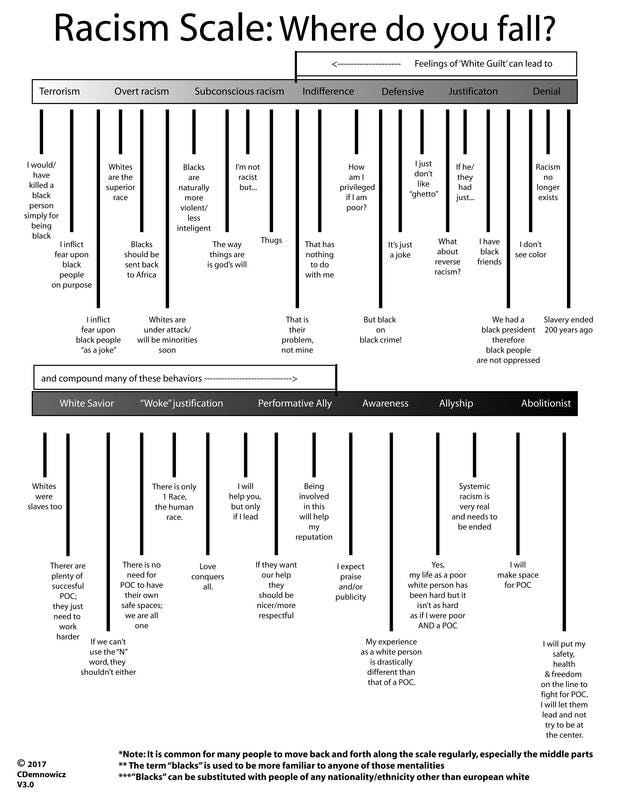
When I submit evidence grounded in social context, in community patterns, in structural trends—I’m told it’s anecdotal. When they dismiss 88 reports from Black families as “unprovable,” they are not being neutral. They are exercising power. And they are doing so with the full confidence that nothing will challenge them—because most of the time, nothing does.
But I will.
And I do.
This isn’t just poor policy—it’s racial bias baked into Swedish institutions.
And every time DO says it “can’t see racism,” it’s not because it isn’t there.
It’s because they were never trained to see it in the first place.

Structural Racism in Sweden: From Parliament to the Club Line
It’s easy for people to point to a bouncer and say, “That’s the problem.” But as the Aftonbladet editorial put it: Racism in Sweden doesn’t start at the club door. It starts in Parliament. And they’re right. Nightclub discrimination isn’t a cultural glitch—it’s a mirror. It reflects the unspoken rules passed down from political leadership, institutional norms, and everyday silences. If Sweden’s elected officials don’t name racism in policy, don’t confront it in policing, don’t enforce accountability in state agencies—why would a bouncer behave any differently?
We’re not talking about random bias. We’re talking about systemic racism legitimized from the top down. Let’s look at the bigger pattern:
When youth report discrimination to the Discrimination Ombudsman (DO), they are met with denial—not justice.
When Brå publishes data showing that Black individuals experience higher rates of hate crime, the national conversation still centers whiteness and “equality.”
When journalists and researchers expose exclusion in housing, employment, education, and healthcare, politicians deflect by saying, “Sweden is not like the U.S.”
But racism doesn’t need to look like America to be real.
Sweden’s racism is coded. Sanctioned. Sanitized. And deeply systemic.
And when Members of Parliament platform xenophobic narratives, pass policies that increase policing in racialized communities, or refer to migration as a “threat to Swedish values”—that isn't neutral discourse. That’s scaffolding. That’s the structural foundation that makes it easier for every bouncer, school administrator, HR recruiter, and landlord to follow suit.
I’ve done anti-racism work across Sweden. From Uppsala to Karlstad. From parent forums to corporate training sessions. And what I see everywhere is this: people don’t just act racist out of ignorance—they act racist because they’ve been taught it’s acceptable by those in power.
That’s why a club in Stockholm can reject dozens of Black youth and face no consequences. Because the state already made it clear: racism is only real if it makes white people uncomfortable. Otherwise, it’s invisible.
Sweden’s Structural Racism: Not an Exception, but a Design
What happened at those club doors is not isolated. It’s not a miscommunication. It’s not about “a few bad bouncers.”
It is the symptom of a national pattern—a structure built to maintain the illusion of equality while avoiding the discomfort of accountability. And I’ve said this before, in a piece titled “The Illusion of Swedish Inclusion”:
"Sweden’s reputation for progressiveness rests not on active inclusion, but on silent exclusion. Sweden does not reject foreigners outright—it simply does not make room for them."
This is not unique to the nightlife industry. It plays out in job interviews, school placements, apartment viewings, university admissions, boardrooms, media coverage, and institutional funding. It’s all the same choreography: maintain the aesthetic of fairness, while quietly preserving white comfort.
I’ve spoken about this publicly—on panels, in classrooms, and most directly in my TEDx talk on how Swedish society silences the very people it claims to include. The performance of equality here is powerful. But performances are rehearsed. Real change is not.
Let me say this clearly:
When people like me speak, we are not “angry.” We are accurate.
When Black youth file reports, they are not being “sensitive.” They are documenting violence.
When hundreds of people come forward with stories of discrimination, it’s not an “outlier.” It’s a blueprint.
Sweden doesn’t have a racism problem because it looks like other countries. It has one because it refuses to name its own.
And when that refusal comes from the very institutions meant to protect us—from DO, from Parliament, from public discourse—then the harm is not accidental. It’s structured. Rehearsed. Protected.
This is the work I’ve been doing for years. And I will keep doing it—until Sweden no longer confuses silence with equality.
People Keep Reporting Racism in Sweden—So Why Doesn’t Anything Change?
Every time another investigation exposes racism in Sweden—whether it’s in nightclubs, schools, healthcare, or housing—the same pattern plays out: public outrage, a few interviews, maybe a panel conversation. Then silence.
But the silence doesn’t reflect the absence of racism. It reflects the refusal to act.
Let’s look at the numbers:
Over 600,000 Black people live in Sweden—yet formal mechanisms like the DO (Discrimination Ombudsman) rarely act on complaints from our communities.
According to the DO’s own data, 600,000 people report experiencing discrimination every three months in Sweden. And yet? Very few of those reports result in institutional consequences.
Léon Stiernstedt and other researchers have shown that the majority of racist incidents—especially those based on ethnicity or skin color—never even reach formal complaint status, due to widespread distrust in the system.
35% of Sweden’s population has at least one parent from a non-European background—yet the institutions deciding what counts as “discrimination” remain overwhelmingly white, Eurocentric, and resistant to structural analysis.
The problem is not a lack of racism. It’s a lack of recognition.
Sweden doesn’t ask: “How racist is this institution?”
It asks: “Can we prove, beyond all doubt, that this individual intended to discriminate at that exact moment?”
This narrow framing of racism—centered on intent, not impact—means that even clear, patterned exclusion can be dismissed as a misunderstanding. That’s how Black youth can be rejected at clubs night after night, and DO still says: “We see no evidence of discrimination.”
And when cases are dismissed, the impact ripples.
Young people lose faith in reporting.
Families stop trusting institutions.
And those of us doing anti-racism work are left picking up the pieces—again.
I’ve received messages from DJs who’ve been told to keep quiet if they want to keep working. From Black women told they’re “too sensitive” when raising concerns. From high school students who experience racial slurs weekly, but are told their stories don’t meet the threshold for action.
The system is designed not just to delay justice—but to exhaust us into silence.
📚 Recommended Reading: Context, Data & Firsthand Accounts
🔗 Samuel Girma: “Svarta fick inte komma in på krogen förr heller” – Aftonbladet
Cultural critic and activist Samuel Girma reflects on 15+ years of witnessing anti-Black gatekeeping in Sweden’s nightlife. He connects the 200 Sekunder investigation to long-standing systemic racism that most Swedes still refuse to name.
👉🏾 Read his perspective on Aftonbladet.
🔗 Aftonbladet Editorial: “Racism Doesn’t Start at the Club Door—It Starts in Parliament”
This sharp editorial argues that racial profiling in Swedish nightlife is not a fluke—it’s a reflection of the country’s political leadership. When Parliament refuses to name or act on racism, it sends a clear signal: exclusion is state-sanctioned. The piece connects nightlife discrimination to systemic failures across law enforcement, policy, and the Discrimination Ombudsman’s inaction.
👉🏾 Read the full editorial on how racism in Sweden is legitimized from the top down.
🔗 “200 Sekunder” Exposé on Nightclub Racism – Aftonbladet TV
A televised experiment documenting how Black and white patrons are treated differently at Swedish nightclubs. The footage confirms what many Black Swedes already know: exclusion isn’t random.
👉🏾 Watch the full investigation.
🔗 Brå: Hate Crime Statistics in Sweden (Official Report)
Published by the Swedish Crime Prevention Council, this report includes official data on racially and ethnically motivated hate crimes—placing Sweden among Europe’s highest per capita.
👉🏾 Explore the hate crime statistics here.
🔗 Sweden’s Discrimination Ombudsman (DO) – Official Website
The DO is the authority tasked with ensuring legal protection from discrimination in Sweden. Their website outlines formal complaint processes and legal frameworks—though their efficacy remains widely contested.
👉🏾 Visit the official DO site.
🔗 Racism and Discrimination in Sweden: Post-Election Trends – Daily Sabah
This piece examines how Sweden’s political climate has contributed to the rise in racial discrimination, xenophobia, and exclusion—particularly following recent elections.
👉🏾 Read more on Daily Sabah.
🔗Link to Fardowsas linkedin post
More Essays on Sweden’s Racism and Structural Gaslighting
You can find more of my essays on Racism in sweden, holding boundaries in oppressive systems, challenging institutional gaslighting, and reclaiming voice across personal, political, and historical landscapes.
Teaching the Children We Were
I didn’t wake up one day and decide to lecture in schools about racism. I became the person I needed when I was a child. That’s how this work began.
Why Sweden’s Reputation as an Inclusive Country is Misleading
The Myth of Swedish Inclusion: A Reality Check for Foreigners Expats and Migrants alike
Why Sweden Refuses to Call White Terrorism by Its Name
Silencing Voices: Sweden’s Reluctance to Confront Its Own Racism
7 Hard Truths About DEI and Neurodiversity in Sweden - From Lovette Jallow
Navigating DEI, Autism, and ADHD as a Black Woman in the Nordics: Challenges and Solutions
To Book Me for Lectures, Keynotes, and Critical Conversations
I lecture internationally on subjects including—but not limited to—Sweden’s structural racism, systemic gaslighting of survivors, African matriarchal governance, neurodivergence before colonial pathology, and intersectional justice.
If you’re an organization, institution, or collective ready to move beyond checkbox diversity and confront the systems protecting inequality—you can book me for lectures, keynotes, panels, or workshops here: https://lovettejallow.com/ | Lovette@Lovettejallow.com
Who is Lovette Jallow?
Award-Winning Lecturer | Author | DEIBJ & Neurodiversity Expert
Lovette Jallow is one of Scandinavia’s most influential voices on systemic racism, intersectional justice, and human rights. A nine-time award-winning author, keynote speaker, lecturer, and humanitarian, she specializes in neurodiversity, workplace inclusion, and structural policy reform.
As one of the few Black, queer, autistic, ADHD, and Muslim women working at the intersection of human rights, systemic accountability, and corporate transformation, Lovette brings an unmatched perspective rooted in both lived experience and professional expertise. Her work bridges the gap between theory, research, and action, helping organizations move beyond performative diversity efforts toward sustainable, structural change.
She has worked across Sweden, The Gambia, Libya, and Lebanon, tackling institutional racism, legal discrimination, and refugee protection. Her expertise has been sought by global publications like The New York Times, on high-profile legal cases, and by international humanitarian organizations, where she has provided critical insights on racial justice, policy reform, and equity-driven leadership.
Follow Lovette Jallow – DEIB Strategist, Keynote Speaker & Humanitarian:
Website: lovettejallow.com
LinkedIn: linkedin.com/in/lovettejallow
Instagram: instagram.com/lovettejallow
YouTube: youtube.com/@jallowlovette
Twitter/X: twitter.com/lovettejallow






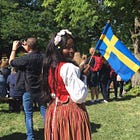
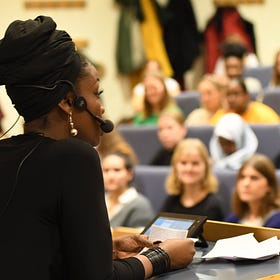

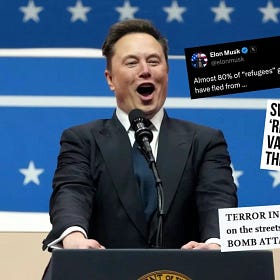

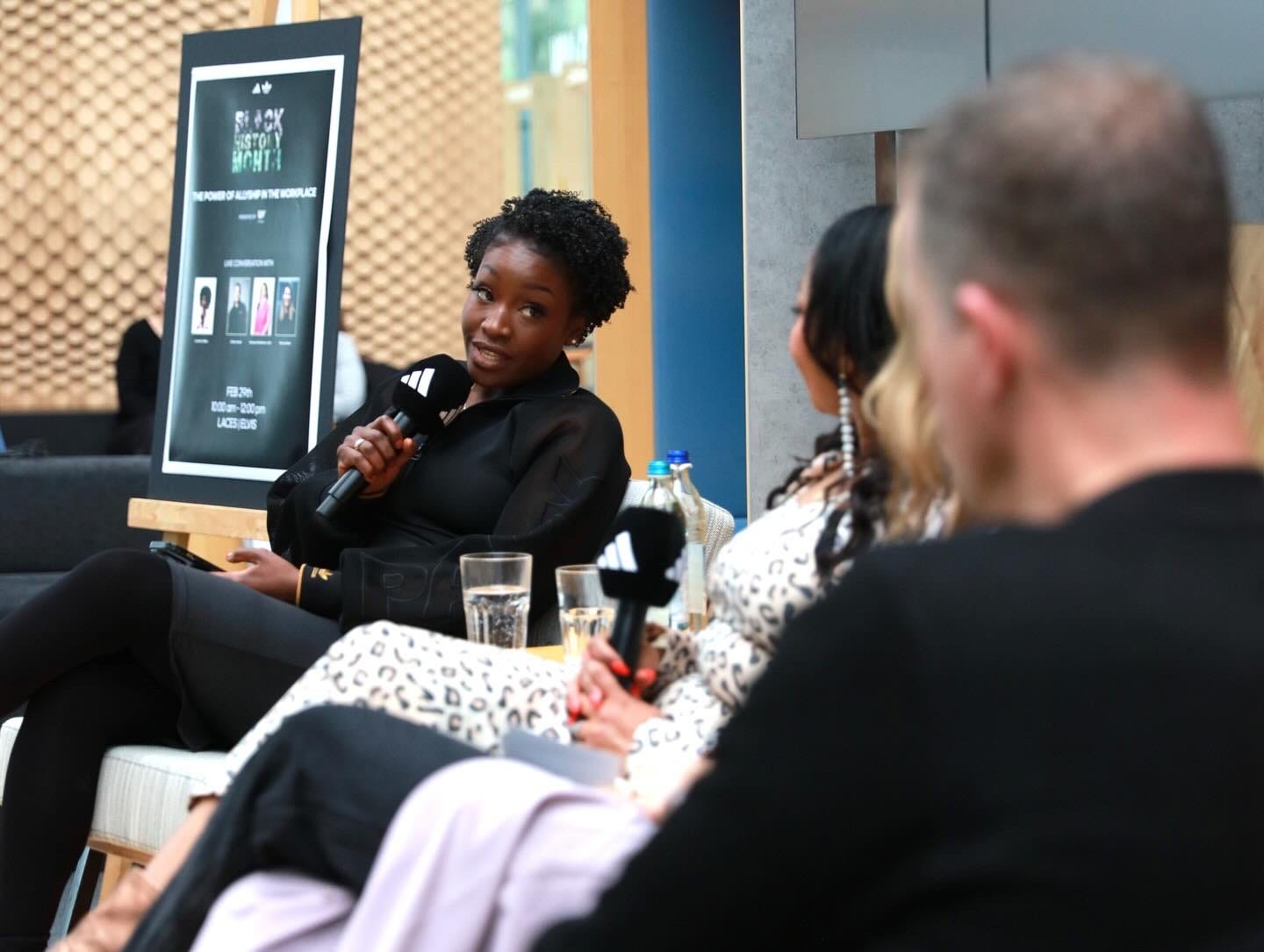
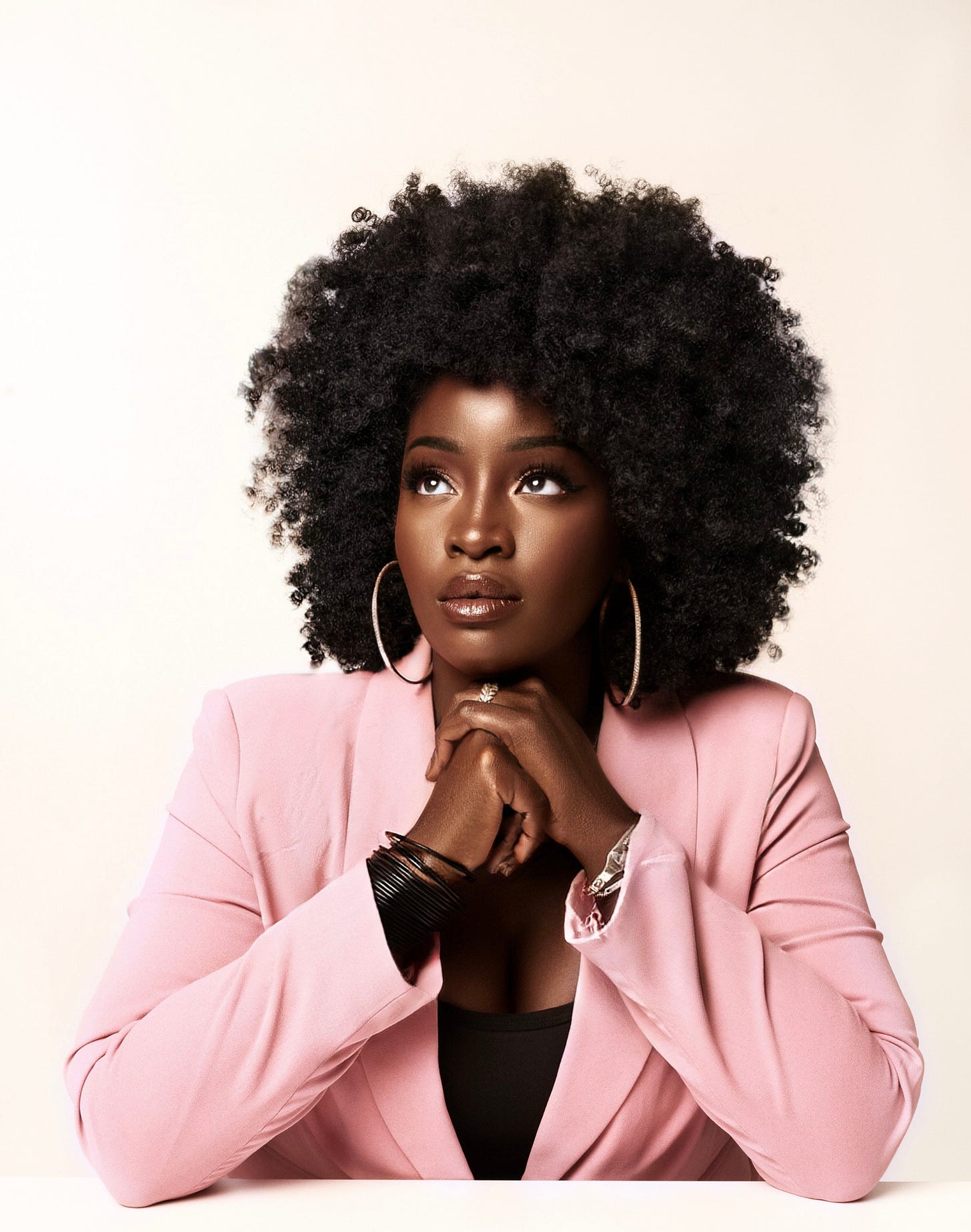
“Let me be clear: DO is not a broken system. It functions precisely as intended—for the people by whom and for whom it was originally designed."
As for the oft-repeated line, ‘See, we have systems in place to prevent this, so it’s not happening’ such assurances are hollow. These initiatives offer little to those actually harmed, as they are largely driven by predominantly white individuals who neither understand nor can experience the realities of racism. How can one effectively challenge something they insist does not exist? 😖
This is the part everyone forgets when they tout this country or that about being better on racism than America(looking at you, white leftists). It's no less present anywhere else.